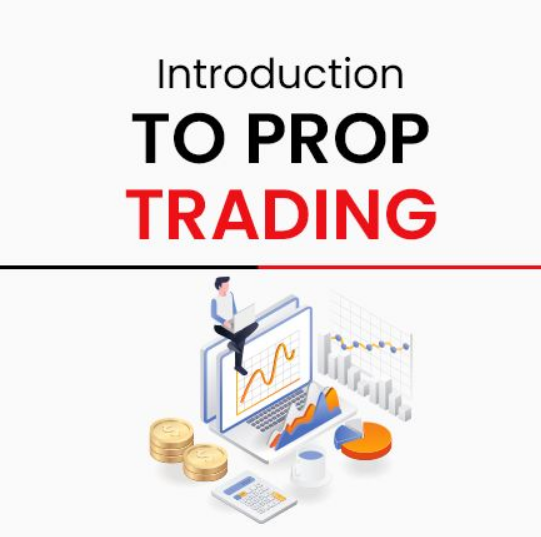Prop Trading Strategies PDF: Proven Advanced Tactics
In the fast-paced world of proprietary trading, success hinges on advanced strategies, rigorous backtesting, and precision in execution. This guide provides you with detailed insights into prop trading strategies using a comprehensive prop trading strategies pdf, showcasing advanced techniques for both retail traders and firm-level operations. Whether you are a junior trader or a senior quant, the actionable insights in this guide aim to transform your trading approach.
Introduction to Prop Trading
Proprietary trading or prop trading empowers firms and traders to trade using the firm’s capital rather than client funds. This model demands precision, rapid decision-making, and robust backtesting strategies to ensure that every move is statistically validated. In this guide, we dissect the state-of-the-art tools and methodologies behind effective prop trading, offering a deep dive into automated backtesting systems, real-time data integrations, and robust risk management solutions.
The image above illustrates a sophisticated trading dashboard incorporating data feeds, analytics, and alert systems. It sets the stage for understanding how advanced visual tools enhance decision making in prop trading environments.
Mastering Advanced Backtesting Techniques
Backtesting forms the core of any successful trading strategy. For prop traders, automating this process is vital. Modern automated backtesting tools like TradingView, MetaTrader 5, and NinjaTrader come equipped with advanced features:
- Event-Driven vs. Vectorized Models: Tools like TradingView utilize event-driven models, enabling traders to simulate trades based on specific market events. In contrast, vectorized platforms such as NinjaTrader allow for rapid computation, enabling robust simulations that factor in commissions and slippage.
- Optimization Capabilities: MetaTrader 5 offers automated parameter optimization to reduce overfitting. By exploring various parameter sets, traders can reliably stress test their strategies using walk-forward optimization.
- Data Quality and Integration: Each platform provides deep historical data covering multiple asset classes. Easy integration with brokers via API ensures a seamless transition from testing to live deployment.
Common Pitfalls in Backtesting
While automated backtesting can streamline strategy development, pitfalls such as overfitting, survivorship bias, look-ahead bias, and data snooping remain prevalent:
- Overfitting: Adapting a strategy to historical data excessively can lead to poor performance in live markets. This guide discusses techniques for sensitivity analysis and regularization to combat overfitting.
- Survivorship Bias: Ensure the dataset includes companies that may have gone bankrupt or been delisted. Comprehensive data sourcing from third-party providers helps mitigate this risk.
- Look-Ahead Bias: Use strictly historical data without forward-looking indicators. Incorporating out-of-sample testing is key to neutralizing this bias.
Walk-Forward Optimization and Forward Testing
Walk-forward optimization provides a dynamic way to test strategies on rolling periods. By splitting historical data into in-sample and out-of-sample segments, traders can recalibrate parameters before using a separate dataset for validation. This method, combined with forward testing (paper trading), creates a robust mechanism to bridge theory and practice.
For instance, by applying forward testing after a successful backtesting phase using platforms such as QuantConnect or Backtrader, traders can monitor key performance metrics like the Sharpe ratio and drawdown reductions in a live market setting. Key internal resources can be found in our article on Prop Trading Risk Management and our in-depth guide on Backtesting Techniques for Traders.
Comparative Analysis of Leading Backtesting Tools
Below is a detailed comparison table outlining the distinct features of major automated backtesting platforms:
| Tool | Backtesting Features | Data Quality | Integration | Pricing | Use Cases |
|---|---|---|---|---|---|
| TradingView | Event-driven, customizable indicators, commission/slippage simulation | Extensive historical chart data, multiple asset classes | API integrations with brokers, community scripts | Freemium model with premium tiers | Retail traders & prop firms seeking visual analysis |
| MetaTrader 5 | Automated parameter optimization, forward testing, stress testing | Comprehensive, real-time and historical data feeds | Integrated broker solutions, expert advisor support | Free through many brokers, paid for premium data feeds | Both institutional and high-frequency trading strategies |
| NinjaTrader | Vectorized backtesting, strategy optimization, simulated trading | Robust historical and tick data availability | Customizable API, seamless broker integration | License purchase required for full features | Advanced algorithmic trading and institutional use |
Advanced Risk Management and Compliance
Effective risk management is critical in prop trading. The latest regulations such as MiFID II, ESMA guidelines, and NFA rules demand rigorous compliance and robust internal controls. Prop firms need to integrate risk management tools that automatically adjust parameters in response to market volatility.
For example, a risk management checklist might include:
- Defined stop-loss and take-profit levels
- Stress testing using historical worst-case scenarios
- Real-time alerts on margin calls and liquidity thresholds
- Automated compliance checks aligned with ESMA and MiFID II monitoring
Case Study: Advanced Backtesting Impact
A leading prop trading firm recently revamped its backtesting process using MetaTrader 5’s automated optimization feature and NinjaTrader’s high-frequency simulation environment. The firm faced challenges with overfitting and slow iteration cycles. By implementing walk-forward optimization and integrating forward testing, they achieved a 20% improvement in the Sharpe ratio and reduced maximum drawdown by 15%.
Another case involved a retail trading team that harnessed TradingView’s community-driven scripts to refine their entry and exit algorithms. Their iterative refinements, supported by out-of-sample validation, resulted in improved trade consistency and reduced over-optimization errors.
This screenshot from NinjaTrader evinces how detailed analytics and automated reporting enable prop traders to make informed decisions that directly impact their risk management and profitability.
Step-by-Step Guide: Automating Your Backtesting Workflow
Below are actionable steps for integrating automated backtesting into your prop trading strategy:
- Strategy Formulation: Begin with a clear trading hypothesis. Document entry, exit, and money management rules. Pro Tip: Leverage sample codes such as the Python snippet below using Backtrader.
import backtrader as bt class MyStrategy(bt.Strategy): def __init__(self): self.sma = bt.indicators.SimpleMovingAverage(self.data.close, period=20) def next(self): if self.data.close[0] > self.sma[0]: self.buy() elif self.data.close[0] < self.sma[0]: self.sell() - Data Gathering: Secure high-quality, historical data. Prefer tick data for high-frequency strategies and bar data for swing analysis.
- Optimization and Walk-Forward Testing: Use your chosen platform’s optimization tool to tweak parameters while continuously validating with out-of-sample data.
- Forward Testing: Transition from simulation to paper trading to verify strategy performance under live market conditions.
- Risk and Compliance Audits: Regularly update your risk management checklist and ensure alignment with current regulatory standards.
Industry Insights and Next Steps
Expert traders agree: automated backtesting and robust data analysis are indispensable in today’s competitive prop trading environment. By adopting advanced techniques, utilizing platforms like TradingView, MetaTrader 5, and NinjaTrader, and continuously testing and iterating strategies, traders can gain a sustainable competitive edge.
For those looking to delve deeper, consider joining our upcoming webinar on cutting-edge backtesting techniques or downloading our comprehensive Risk Management Checklist designed specifically for prop trading. With these tools, you not only enhance your trading systems but also ensure robust compliance and risk governance.
Ready to up your prop trading game? Explore our in-depth resources and start refining your automated strategies today.







